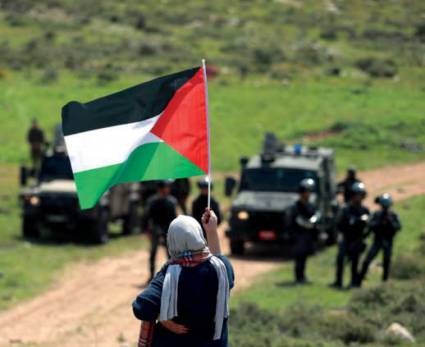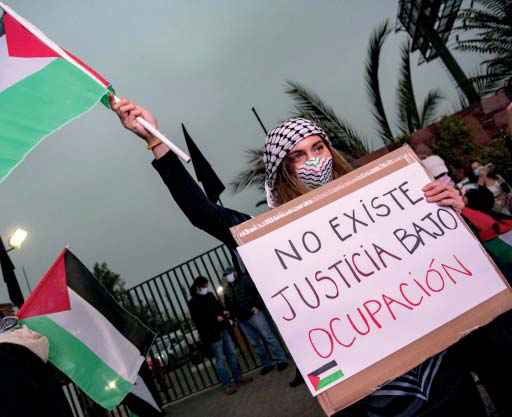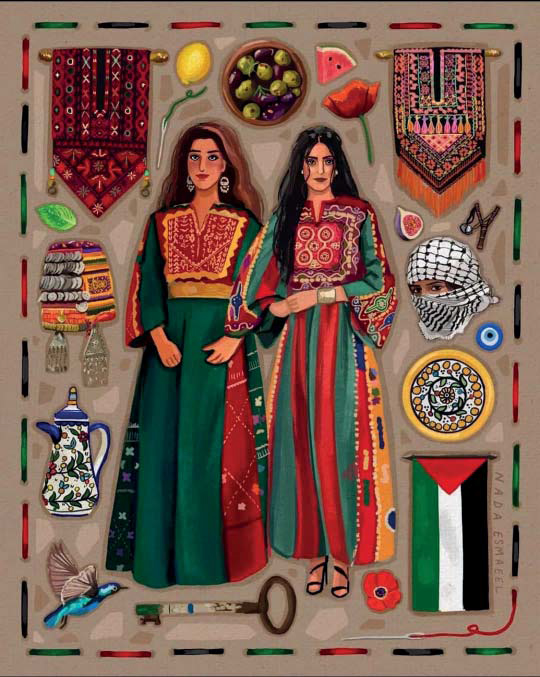Few national slogans evoke as much sympathy, anger at injustice, and warm expectations as the flag of Palestine. Although the origins of the white, black, green and red flag date back to the time when the Ottoman Empire collapsed, its symbolic repercussions reached international status from the struggles of the Arab people against the Israeli occupation.
International solidarity has been one of the greatest strengths of the Palestinian cause. Photo: AFP
The emblem of the Palestinians—reproduced in countless forms of support worldwide, from textile production to emoji—is intrinsically linked to the historical origins and national strains of Arabism. Their color distribution responds to certain meanings related to the Nakba (“catastrophe” in Arabic) and the subsequent cultural resistance of Palestinians over generations. Like other symbols of the identity of the Palestinian diaspora – the olive tree, the keffiyeh or scarf for desert regions, watermelon cultivation, the Key of Return and the Dome of the Rock – Yasser Arafat’s flag continues to vibrate and call upon his compatriots.
The unconditional use of the Palestinian flag was part of the uphill battle for freedom of expression and self-determination that took place in the occupied territories. It was adopted by the Palestine Liberation Organization in the sixties, and the Zionist occupation stigmatized its public display until it decriminalized it, as stipulated in the crucial Oslo Accords signed in 1993 between the government of Israel and the Palestinian Authority.
Symbols of Palestinian identity imagined by plastic artist Nada Ismail. Photo: Palestinian Information Agency
The essential slogan of the Palestinian resistance, which accompanied the Arab people through the bloodiest period, was raised with complete justice in all of Hamas’ resounding diplomatic victories. The first is in Place Fontenoy, Paris, when Palestine was approved for full membership in UNESCO in 2011. Later, the flag of the Palestine Liberation Organization was raised in Turtle Bay, Manhattan, when its entry into the United Nations as a non-member observer state was certified in 2015. Both were moments of jubilation for the pluralism that called for the creation of separate nation-states in the Palestinian region.
With the same fury that extended the military and financial blockade on the occupied Arab population, the Israeli proxy government sought to suppress the use of the Palestinian flag in public. A crime of colossal proportions, committed to question the collective identity of Palestine and to deny international solidarity.
Despite the daunting demands, the cultural values of peace and tolerance will continue to compete with the greed of the colonialists, in one of the sectarian and civilizational foci in human history.

“Unapologetic tv specialist. Hardcore zombie trailblazer. Infuriatingly humble problem solver.”



